One of the most frustrating things for an RVers is having to deal with a water leak underneath the RV in the underbelly area! And if you didn’t know, this is a dreaded repair for any RV technician. From sewer leaks, dump valve cable failures, water lines, waste tank, grey tank, fresh water tanks, and the hundreds of fittings all leak at any time due to use and wear and tear from traveling.
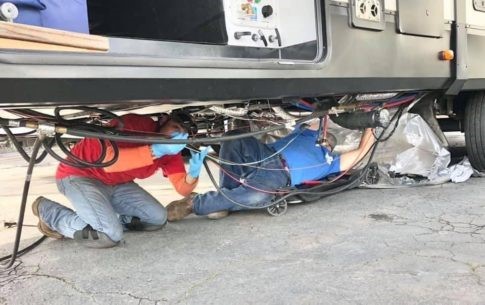
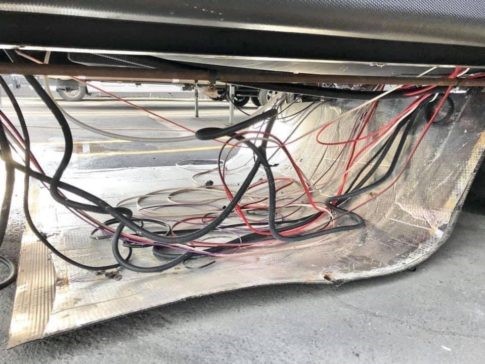
As you will see in the pictures, there is a mess of wires and plumbing that we have to contend with when trying to pin point the leak. Underbelly leak repairs can be like looking for a needle in a haystack.
Prior to Any Repairs We Require the following
- Removal of all personal items from compartments that we will be working in.
- Removal of all personal items from underneath any sinks, shower, toilets, and cabinet that we may need to access for making repairs.
- WE WILL SANITIZE YOUR TANKS -This is a must, please see reasons below on sanitizing holding tanks. This doesn’t mean you…
- We will remove the underbelly material; WE WILL NOT BE CUTTING OPEN THE UNDERBELLY TO MAKE REPAIRS. So please do not ask us to, we will fix issue the correct way or not at all.
- After all repairs are completed, we will provide pictures of repairs, picture of sensors readings if needed.
Sanitizing Holding Tanks and Underbelly Material
Properly draining, flushing, and sanitizing an RV waste holding tank prior to making repairs is essential for several reasons. First and foremost, it is crucial to ensure that the work environment is clean and sanitary for the individuals performing the repairs. A contaminated waste holding tank can pose health risks to those working on the RV, potentially exposing them to harmful bacteria and pathogens.
The primary hazard of working on RV sewage holding tanks is the potential exposure to hazardous waste and noxious fumes. The sewage within the tanks can contain harmful bacteria, viruses, and toxic chemicals that can pose serious health risks if not handled properly. In addition, the fumes emitted from the sewage can be noxious and potentially harmful to the respiratory system.
Additionally, a clean and sanitized holding tank allows for a more accurate assessment of any repairs that may be needed. By thoroughly flushing the tank and removing any remaining waste and debris, technicians can better identify the source of any issues and make more effective repairs.
There are several contributing factors that can cause an underbelly leak:
- Supply lines could have been improperly ran and not secured into place.
- Road vibration and flex causing wear and tear/rubbing underneath the unit.
- Normal use from water pump causes vibration.
- Improper use by not using a water pressure regulator.
Why is this repair such a nightmare?
- On average there are 200+ water line connections throughout the unit.
- Heat ducting and electrical wiring are often in the way.
- In most cases, we also have to pull LP lines, power/manual leveling jacks and/or Styrofoam around pipes in order to inspect an area and make repairs.
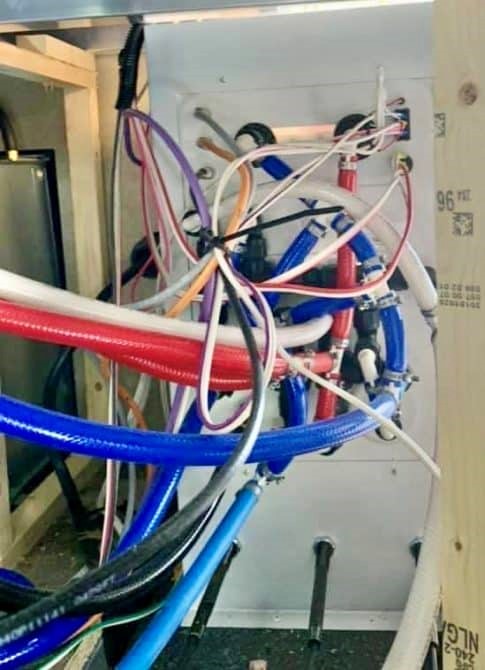
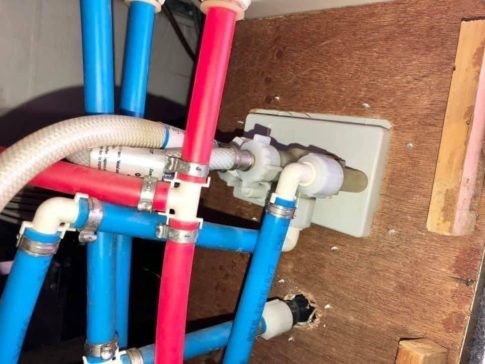
If you are experiencing a leak, there is some helpful information that you can provide that will save your technician some time which hopefully help save your pocketbook:
- Is the leak black, gray or fresh water?
- Is the leak hot or cold water?
- Was the tank overfilled or is it a drain valve leak?
Knowing this information will help locate the leak faster!
Finally, should you end up in a position of needing an underbelly leak repair; whether it is you or an RV technician, this is your excellent opportunity to do the following while having the underbelly removed:
- Add additional insulation.
- Additional spray foam where needed. This will help seal off any penetration from the floor to the house which will help reduce the interior heat or cooling loss. In addition, this will also help reduce the path of entry for pests, rodents and dust/dirt.
- Secure all water lines and electrical wiring that is floating around to help prevent future leaks.
- Secure and retape all heat ducts and piping.
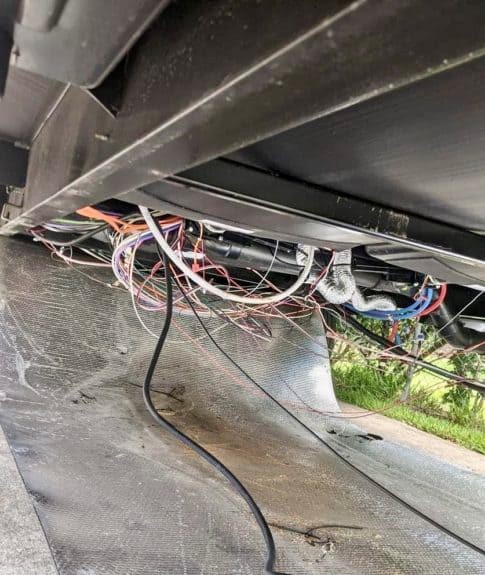
If you are doing these repairs yourself, here are some links to items you’ll need to complete the job:
Gate Valves/Drain Valves Replacement and Underbelly











Make sure you check out our YouTube channel for more helpful information, and other social media pages.
